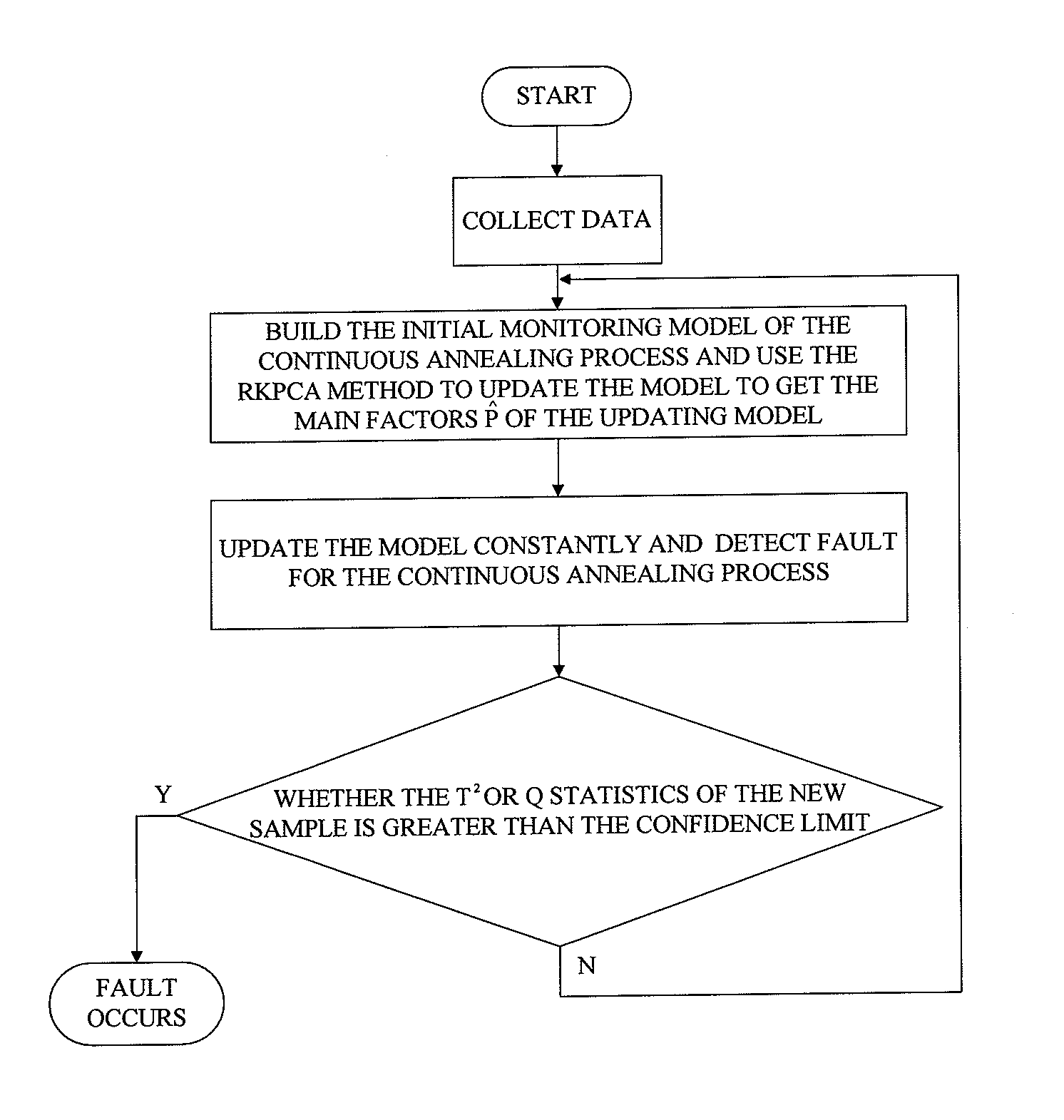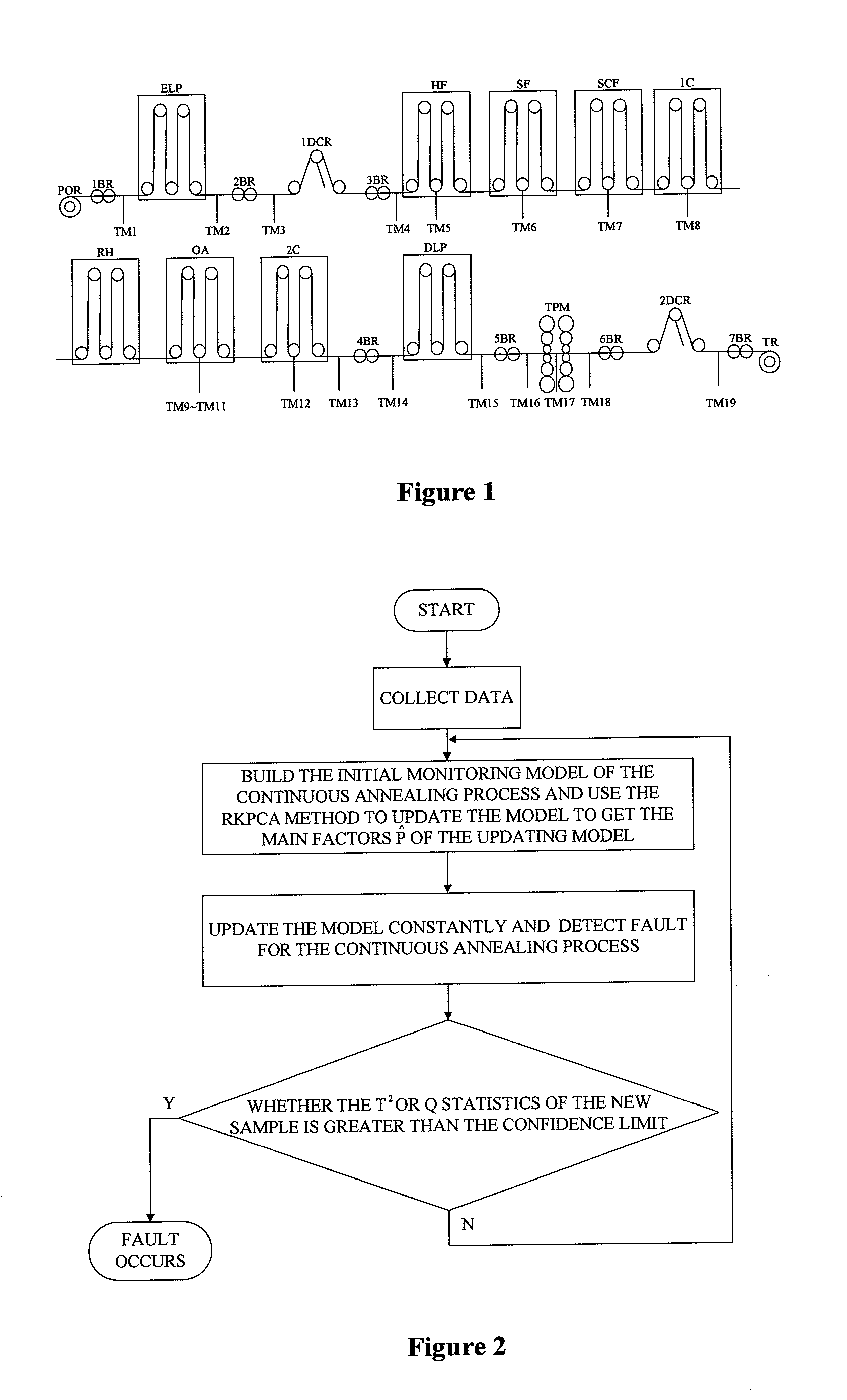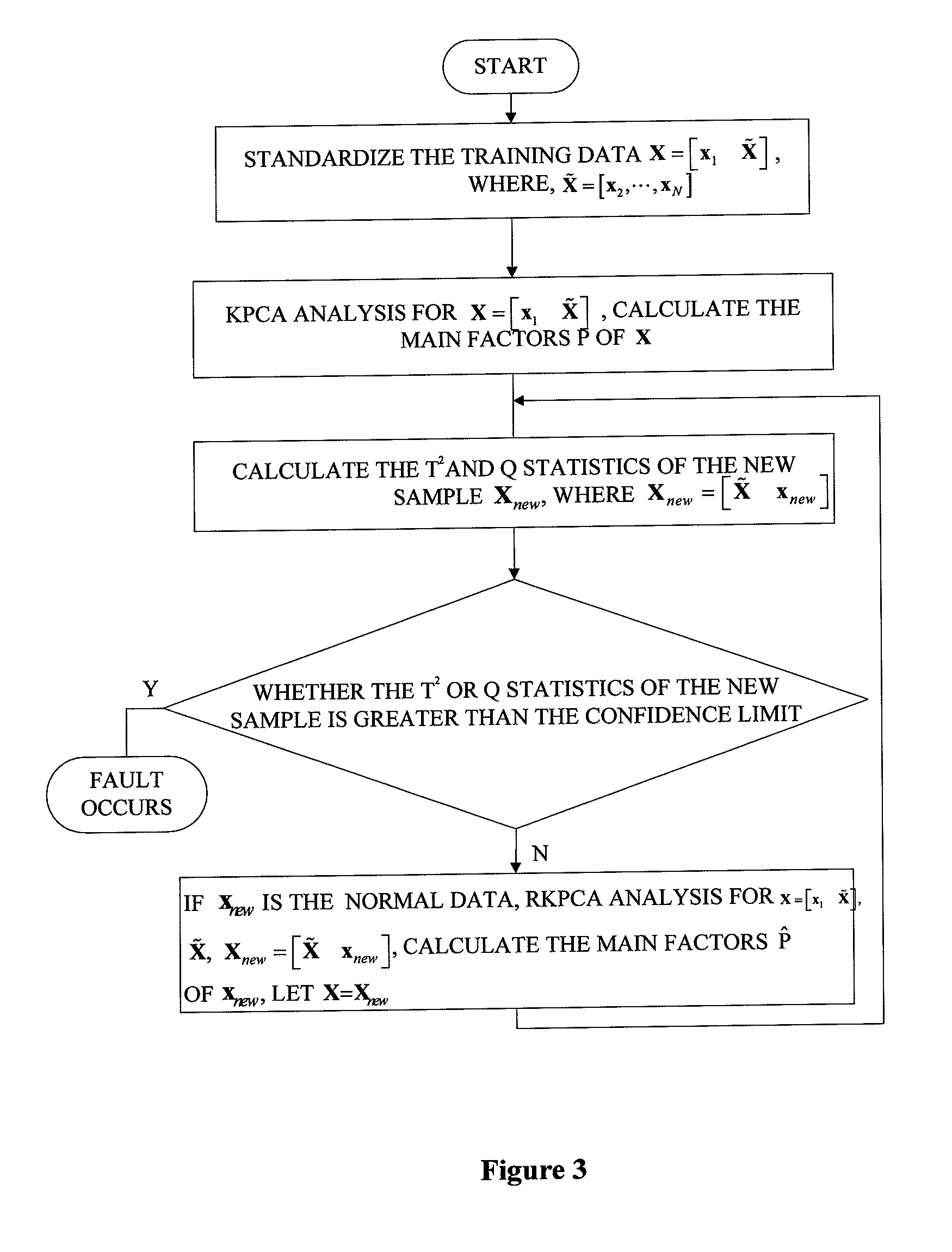Continuous annealing process fault detection method based on recursive kernel principal component analysis
a continuous annealing process and fault monitoring technology, applied in chemical machine learning, testing/monitoring control systems, instruments, etc., can solve problems such as the disadvantage of kpca method, the increase of the need for reliability, availability and security, so as to reduce false alarms and improve the accuracy of fault detection.
- Summary
- Abstract
- Description
- Claims
- Application Information
AI Technical Summary
Benefits of technology
Problems solved by technology
Method used
Image
Examples
Embodiment Construction
[0038]We illustrate further in detail combining of the following drawings and examples for the invention.
[0039]The physical layout of the continuous annealing process is shown in FIG. 1. Where the width of the strip is 900-1230 mm, the thickness is 0.18-0.55 mm, the maximum line speed is 880 m / min, the maximum weight is 26.5 t and is heated to 710° C. The first entry coil is opened by payoff reel (POR), and it is welded into a strip finally The strip passes through 1# bridle roll (1BR), entry loop (ELP), 2# bridle roll (2BR), 1# dancer roll (1DCR), and 3# bridle roll (3BR), then it enters the continuous annealing furnace. The annealing technologies consist of: rapid cooling-reheating-inclined over ageing. The annealing equipments include heating furnace (HF), soaking furnace (SF), slow cooling furnace (SCF), 1# cooling furnace (1C), reheating furnace (RF), over ageing furnace (OA), and 2# cooling furnace (2C). After completing the annealing craft, the strip in turn pass through 4# b...
PUM
 Login to View More
Login to View More Abstract
Description
Claims
Application Information
 Login to View More
Login to View More - R&D
- Intellectual Property
- Life Sciences
- Materials
- Tech Scout
- Unparalleled Data Quality
- Higher Quality Content
- 60% Fewer Hallucinations
Browse by: Latest US Patents, China's latest patents, Technical Efficacy Thesaurus, Application Domain, Technology Topic, Popular Technical Reports.
© 2025 PatSnap. All rights reserved.Legal|Privacy policy|Modern Slavery Act Transparency Statement|Sitemap|About US| Contact US: help@patsnap.com



